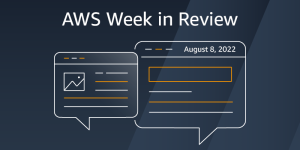
Florida released volume one of its Broadband Equity, Access and Deployment initial proposal on November 15.
It was part of a wave of states that released their proposals in the last week, bringing the total for volume one to 49.
States are required to submit their proposals, which come in two volumes, to the National Telecommunications and Information Administration by December 27. Volume one details how states will ground-truth broadband coverage data, and volume two outlines states’ plans for administering grant programs with their BEAD funds.

The state is planning to adopt the NTIA’s model challenge process to accept and adjudicate claims of incorrect broadband data. The Federal Communications Commission’s largely provider-reported coverage map was used to allocate BEAD money, but is not considered accurate enough to determine which specific locations lack broadband.
Local governments, nonprofits, and broadband providers are able to submit those challenges on behalf of consumers under the model process.
Florida’s broadband office is electing to use one of the NTIA’s optional modifications to the model process. The office will designate all homes and businesses receiving broadband from copper telephone lines as “underserved” – and thus eligible for BEAD funds. The move is an effort to replace older technology with the higher speed fiber-optic cable favored by the program.
The state is electing to accept speed tests as evidence in those challenges, provided they meet certain methodological requirements. In a departure from NTIA guidance on the issue, Florida is planning to allow speed tests to change the designation of locations from underserved to “unserved” – places fast tracked for BEAD projects because of severely inadequate broadband.

The NTIA has said that given the BEAD program’s priority on connecting all unserved and underserved locations, changing a location’s designation is unnecessary. But some states have flagged that they do not expect to have enough funds to reach everywhere lacking broadband, and will have to prioritize those with the lowest speeds.
The state will also administer two optional challenge types the NTIA laid out: area and MDU challenges. States are not required to use these, but the majority of states are planning to do so.
An area challenge is initiated if six or more locations in a census block group challenge the same technology from the same provider with sufficient evidence. The provider is then required to show evidence they provide the reported service to every location in the census block group, or the entire area will be opened up to BEAD funds.
An MDU, or multiple dwelling unit, challenge is triggered when three units or 10 percent of the total units in an apartment building challenge a provider’s service. It again flips the burden of proof, requiring providers to prove they give the reported service for the entire building, not just units that submit challenges.
The process is slated to last 90 days, with 30 days reserved for challenge submission, rebuttals by providers, and final decisions by the state. It can kick off as early as one week after the NTIA approves Florida’s draft.


